

What We'll Leave Behind. How Broken Hyperlinks Are Screwing Up Science. Why there can be only one Enlightenment now that all the coal is gone: Can civilisation reboot without fossil fuels? – Lewis Dartnell. Imagine that the world as we know it ends tomorrow.
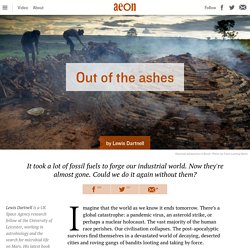
There’s a global catastrophe: a pandemic virus, an asteroid strike, or perhaps a nuclear holocaust. The vast majority of the human race perishes. Our civilisation collapses. The post-apocalyptic survivors find themselves in a devastated world of decaying, deserted cities and roving gangs of bandits looting and taking by force. Bad as things sound, that’s not the end for humanity. Popular now Could we make our home on a rogue planet without a Sun? Should we be suspicious of the Anthropocene idea? What can we do to save the Universe from certain death? Let’s make the basis of this thought experiment a little more specific. So, would a society starting over on a planet stripped of its fossil fuel deposits have the chance to progress through its own Industrial Revolution? It’s easy to underestimate our current dependence on fossil fuels.
In fact, the problem is even worse than that. But my topic here is not what we should do now. Related video. Preserving human knowledge: similar projects - The Knowledge. 5D optical memory in glass could record the last evidence of civilization. Using nanostructured glass, scientists at the University of Southampton have, for the first time, experimentally demonstrated the recording and retrieval processes of five dimensional digital data by femtosecond laser writing.
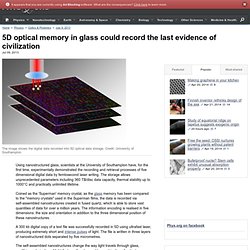
The storage allows unprecedented parameters including 360 TB/disc data capacity, thermal stability up to 1000°C and practically unlimited lifetime. Bubblegram. A laser glass sculpture of a caffeine molecule A bubblegram (a.k.a. laser crystal, 3D crystal engraving or vitrography) is a solid block of glass or transparent plastic that have been exposed to laser beams to generate three-dimensional designs inside.
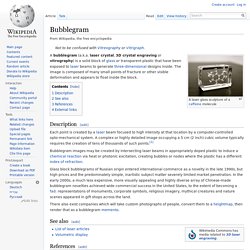
After an Apocalypse, What's Left of Digital Stores of Knowledge? The editor of the Gawker media sci-fi blog io9, Annalee Newitz, is working on a book about how humans will regroup after the apocalypse.
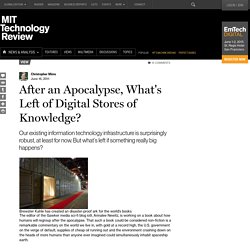
That such a book could be considered non-fiction is a remarkable commentary on the world we live in, with gold at a record high, the U.S. government on the verge of default, supplies of cheap oil running out and the environment crashing down on the heads of more humans than anyone ever imagined could simultaneously inhabit spaceship earth. It’s tempting to believe that we live in a special time – this is the root of all apocalyptic thinking – but it’s hard to compare even today’s menaces to the rise of the Third Reich, the fall of the Roman Empire or the Black Death. At least not yet. But supposing something were to happen, as it does every day in parts of war-torn sub-Saharan Africa – some cascade of environmental and political disasters leading to armed conflict or resource starvation. And especially data centers.
Imagining The Fate Of Data After The Apocalypse. ‘Most crucial scientific knowledge’ preserved in academic’s guidebook for end of the world. University of Leicester astrobiologist highlights importance of understanding fundamental science in new book Issued by University of Leicester Press Office on 2 April 2014 Image of book cover and photographs of Lewis Dartnell available from: pt91@le.ac.uk Book launch: Wednesday 9 April at 6.30pm, at Lutyens & Rubinstein, 21 Kensington Park Road, London, W11 2EU.
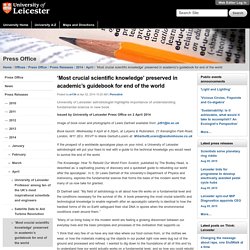
RSVP to Maria Garbutt-Lucero at: MGarbuttLucero@randomhouse.co.uk. Machines: Global Village Construction Set. The Global Village Construction Set (GVCS) is a modular, DIY, low-cost, high-performance platform that allows for the easy fabrication of the 50 different Industrial Machines that it takes to build a small, sustainable civilization with modern comforts.
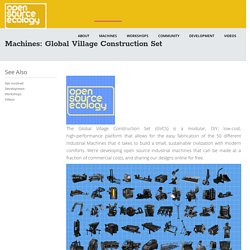
We’re developing open source industrial machines that can be made at a fraction of commercial costs, and sharing our designs online for free. We are developing a lifesize, scalable, modular LEGO construction set. The GVCS in itself consists of many other Construction Sets – as we build not individual machines, but construction sets of machines. As an example, the Fabrication Construction Set component can be used to build any of the other machines.
Our goal is lifetime design, and low maintenance so only a few hours of maintenance per year are required to keep any machine alive. Terminal Event Management Policy. The Terminal Event Management Policy (TEMP) is an official policy of Wikipedia detailing the procedures to be followed to safeguard the content of the encyclopedia in the event of a non-localized event that would render the continuation of Wikipedia in its current form untenable.
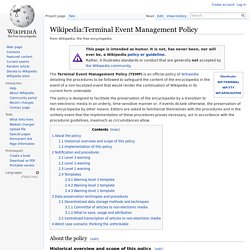
The policy is designed to facilitate the preservation of the encyclopedia by a transition to non-electronic media in an orderly, time-sensitive manner or, if events dictate otherwise, the preservation of the encyclopedia by other means. Editors are asked to familiarize themselves with the procedures and in the unlikely event that the implementation of these procedures proves necessary, act in accordance with the procedural guidelines, inasmuch as circumstances allow. Introduction - 10,000 Year Clock. The full scale 10,000 Year Clock is now under construction.

While there is no completion date scheduled, we do plan to open it to the public once it is ready. The essay below by Long Now board member Kevin Kelly discusses what we hope the Clock will be once complete. This is one of several projects by Long Now to foster long-term thinking in the context of the next 10,000 years. by Kevin Kelly There is a Clock ringing deep inside a mountain.
Is around to hear it.